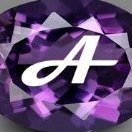-
Recently Browsing 0 members
- No registered users viewing this page.
-
Topics
-
-
Popular Contributors
-
-
Latest posts...
-
138
John Bolton's Home Raided - Confidential National Security Docs
No such thing as a neocon republican or a neocon democrat - they are neocons, full stop. They are a tumor on the party that they think will serve their agenda. The Lincoln Project proved it as it was brimming full of neocon scum enraged that Trump was anti-intervention, anti-war. Then the Democrats embraced Bolton and Cheney - quite frankly, staggering. -
100
Trump: The Big Beautiful Failure
This fine sort of upscale rape luvin Trump hater. LOL Just listen to her, total nut-bar. Guess who funded her law suit against Trump. -
33
"90 Days" Report After Having Returned From Abroad - Bangkok Imm
I tried that once after a trip outside Thailand, after getting rejected online from BKK CW... And subsequently got a mailed return of my reporting form saying it was denied and I had to report in person. -
933
-
104
Gavin Newsom
Old Newsome was poking his Campaign managers wifey around the 2006 era. Very classy. -
135
The slow moving coup in the USA
Are you blind? Obviously, he isn't; do you know what a sentence is? There are two in that referenced post.
-
-
Popular in The Pub







.thumb.jpg.bc523c85a8d558dbc282dca7a2e602c9.jpg)

Recommended Posts
Create an account or sign in to comment
You need to be a member in order to leave a comment
Create an account
Sign up for a new account in our community. It's easy!
Register a new accountSign in
Already have an account? Sign in here.
Sign In Now